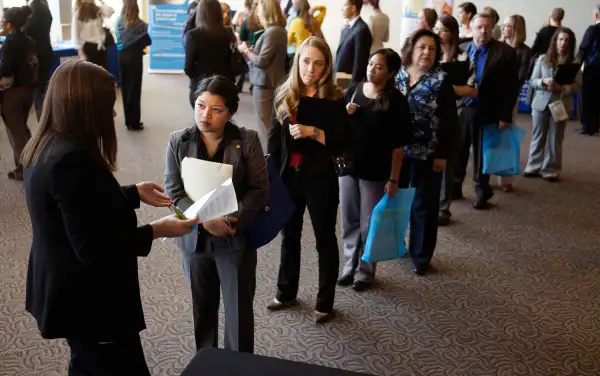3 Ways Friday's Jobs Report Could Affect Interest Rates
Money is not a client of any investment adviser featured on this page. The information provided on this page is for educational purposes only and is not intended as investment advice. Money does not offer advisory services.

Recent global market shocks have put the Federal Reserve in a bind: Should the central bank try to calm nerves on Wall Street by postponing a long-awaited interest rate hike? Or should the Fed go ahead and lift rates, on the premise that this sends a signal that the economy is strong enough to withstand a small bump in rates?
Friday's jobs report from the Labor Department will play a key role in helping Fed chair Janet Yellen make that decision.
Heading into August, investors had been fairly confident of a couple of things—that the economy was growing fast enough to produce 200,000 or more jobs a month, and that the Fed would start raising rates in September to reflect that strength.
But the sell-off on Wall Street, triggered by a slowdown in China's growth, now has investors worried that the U.S. economy might catch China's economic cold. Potentially making matters worse: What if the Fed starts tapping on the brakes just as the economy is set to slow on its own?
This is where Friday's jobs data comes in.
Right now, Wall Street believes the economy grew enough in August to create around 217,000 nonfarm payroll positions.
Here are three possible scenarios for how Friday's report may play out, and the impact on the markets:
Scenario 1: The economy produces fewer than 200,000 jobs.
Recent data has shown that while the U.S. economy is still growing, the rate of growth is far from robust, especially in the manufacturing sector. If the economy produced fewer than 200,000 new jobs in August, "the Fed may have a hard time justifying a September start to its long-anticipated rate-tightening program," says Sam Stovall, U.S. equity strategist for S&P Capital IQ.
Initially, this could be received well on Wall Street.
Ed Yardeni, president and chief investment strategist for Yardeni Research, notes that he wouldn't be surprised if the markets have a "melt-up," or rally, if the Fed does nothing.
But such a rally will likely be short lived. That's because investors will eventually start worrying about the health of the economy again. Plus the Fed would have to revisit its rate decision the following month. So the hand-wringing would start all over again.
Scenario 2: The economy produces 250,000 or more new jobs.
On paper, a really strong jobs report should be a bullish indicator, since it would show that China's slowdown has not affected the U.S. In reality, though, a strong jobs report could return focus on a potential September hike, notes John Stoltzfus, chief investment strategist for Oppenheimer.
Initially, that might trigger some selling on Wall Street. But many analysts think this could be good for the markets in the long run.
Liz Ann Sonders, chief investment strategist at Charles Schwab, argues that if the Fed lifts, or "normalizes" rates, that would send a signal to investors that the underlying economy is sufficiently strong to withstand global troubles. And in the long run, she says, that's more bullish for Wall Street.
Scenario 3: The jobs reports comes in just right, at around 217,000.
Normally, Wall Street loves a so-called Goldilocks report—one that shows the economy is neither too hot nor not too cold. But that might be the last thing the Fed wants here.
A jobs report that shows employment growing just as expected provides the Fed with no cover. Whatever decision the Fed makes at its September policy meeting will come under heavy scrutiny and criticism.
And in the meantime, it will create yet more uncertainty on Wall Street about what the Fed will do come Sept. 17.
